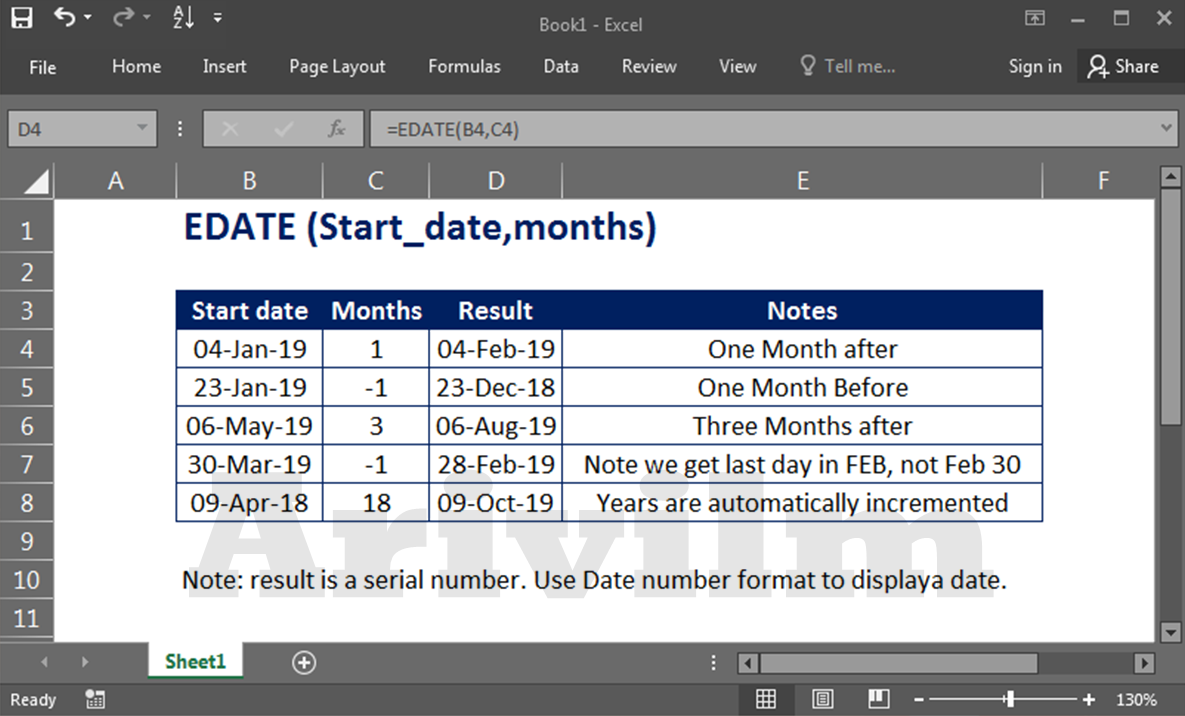The Excel EDATE function returns a date on the same day of the month, x months in the past or future. You can use EDATE to calculate expiration dates, maturity dates, and other due dates. Use a positive value for months to get a date in the future, and a negative value for dates in the past.
Syntax
The syntax for the EDATE function in Microsoft Excel is:
=EDATE( start_date, months )
Parameters or Arguments
start_date
The starting date to use in the calculation.
months
The number of months to add to the start_date. It can be a positive or negative value.
Date Arguments
Note that Microsoft advises that you do not type dates directly into functions, as Excel interprets text representations of dates differently, depending on the date interpretation settings on your computer.
Therefore the start_date argument for the Edate function should be input as either:
- A reference to a cell containing a date
Or
- A date returned from another function or formula.
Edate Function Examples
Column B of the following spreadsheet shows six examples of the Excel Edate function.
Formulas:
The above examples illustrate that:
► You can use negative values for the months argument, to get a date that is before the supplied start_date.
► The function is able to cope with months that do not contain the same day number as the start_date. For example:
- There is no 31st day of November, so when calculating 1 month before 31st December, the function returns the 30th November.
- Similarly, the function can handle the leap year day – returning 28-Feb-2017 as the date 12 months after 29-Feb-2016.
Note also that, as recommended by Microsoft, in all of the above calls to the Edate function, the start_date has been supplied as a cell reference.


